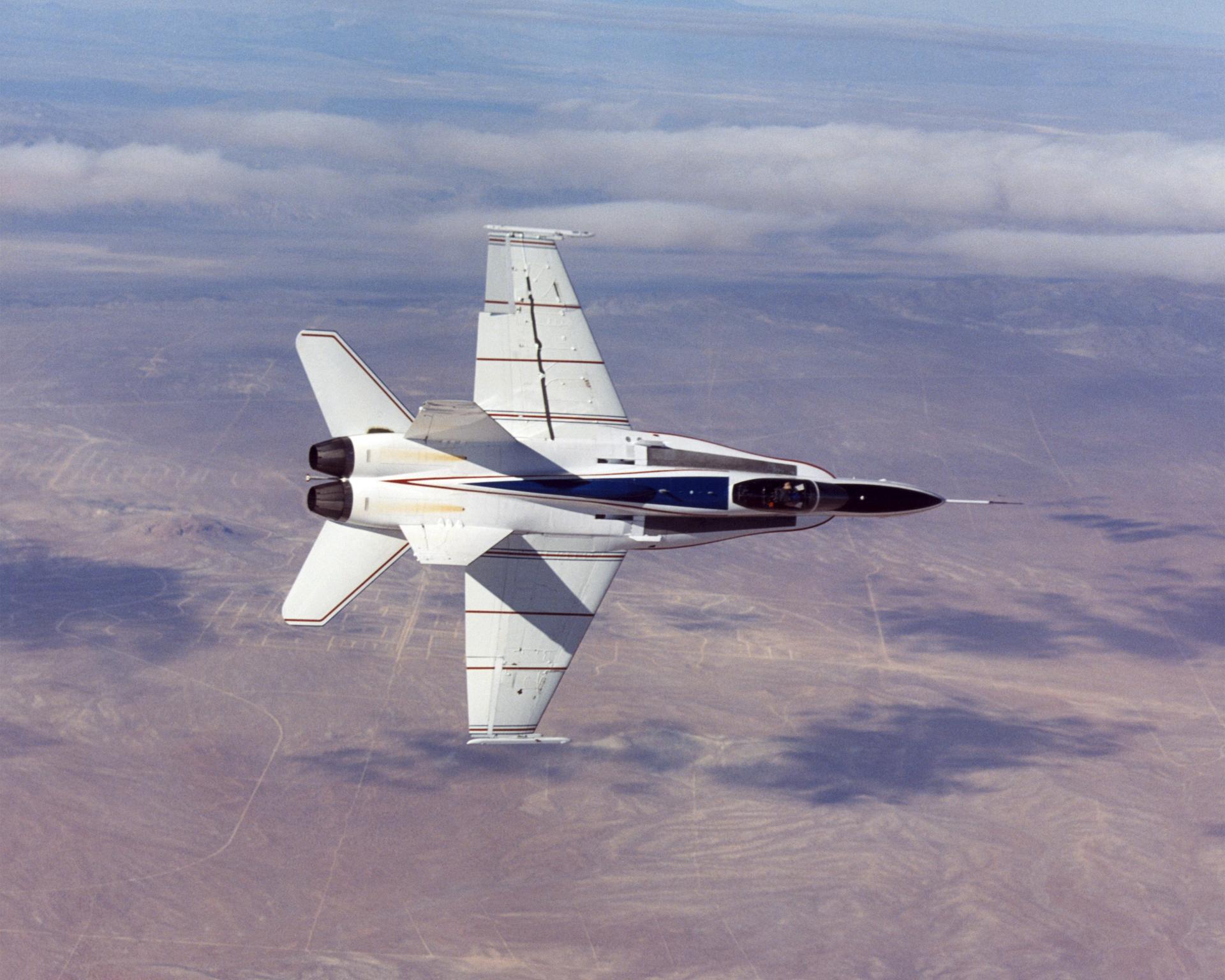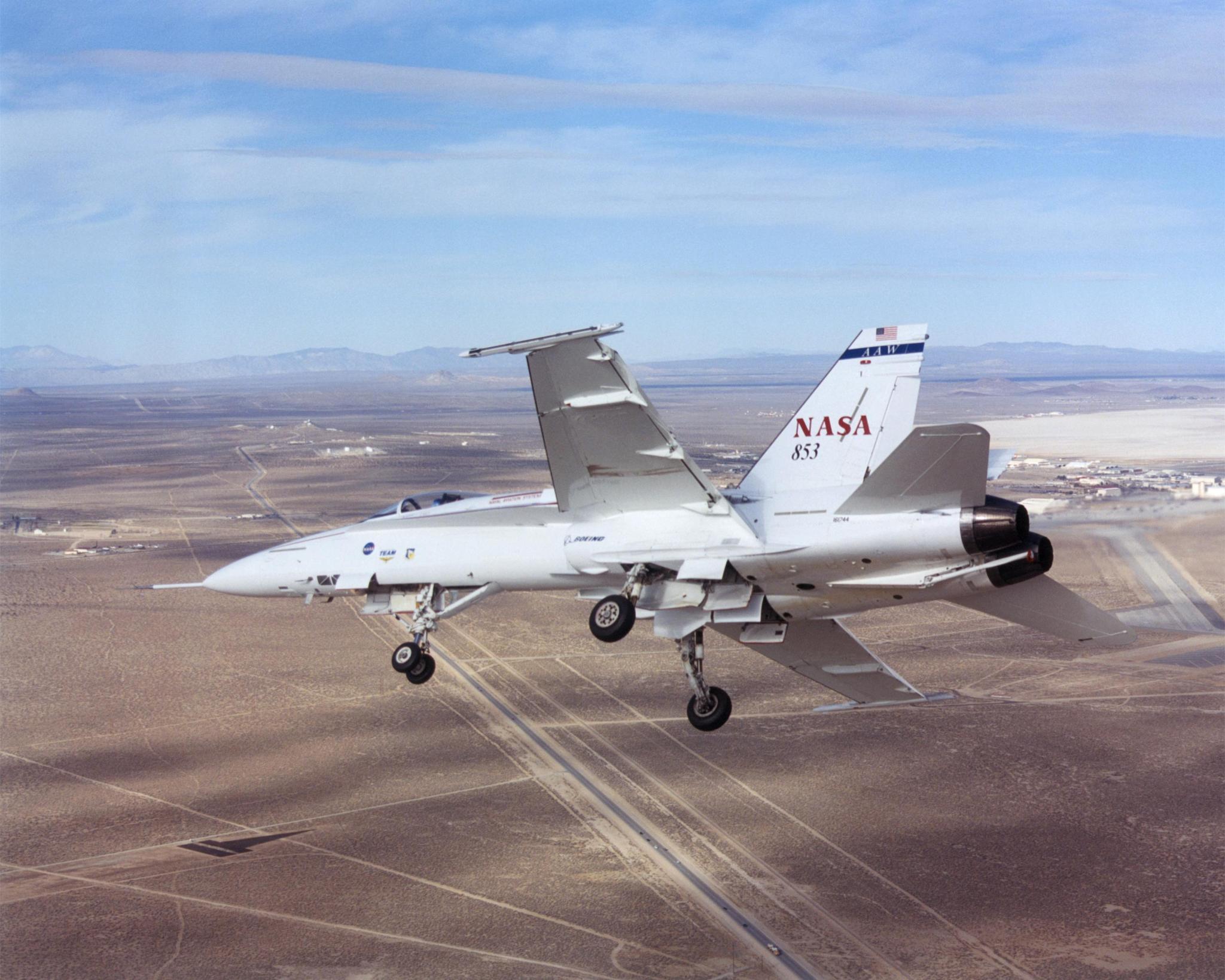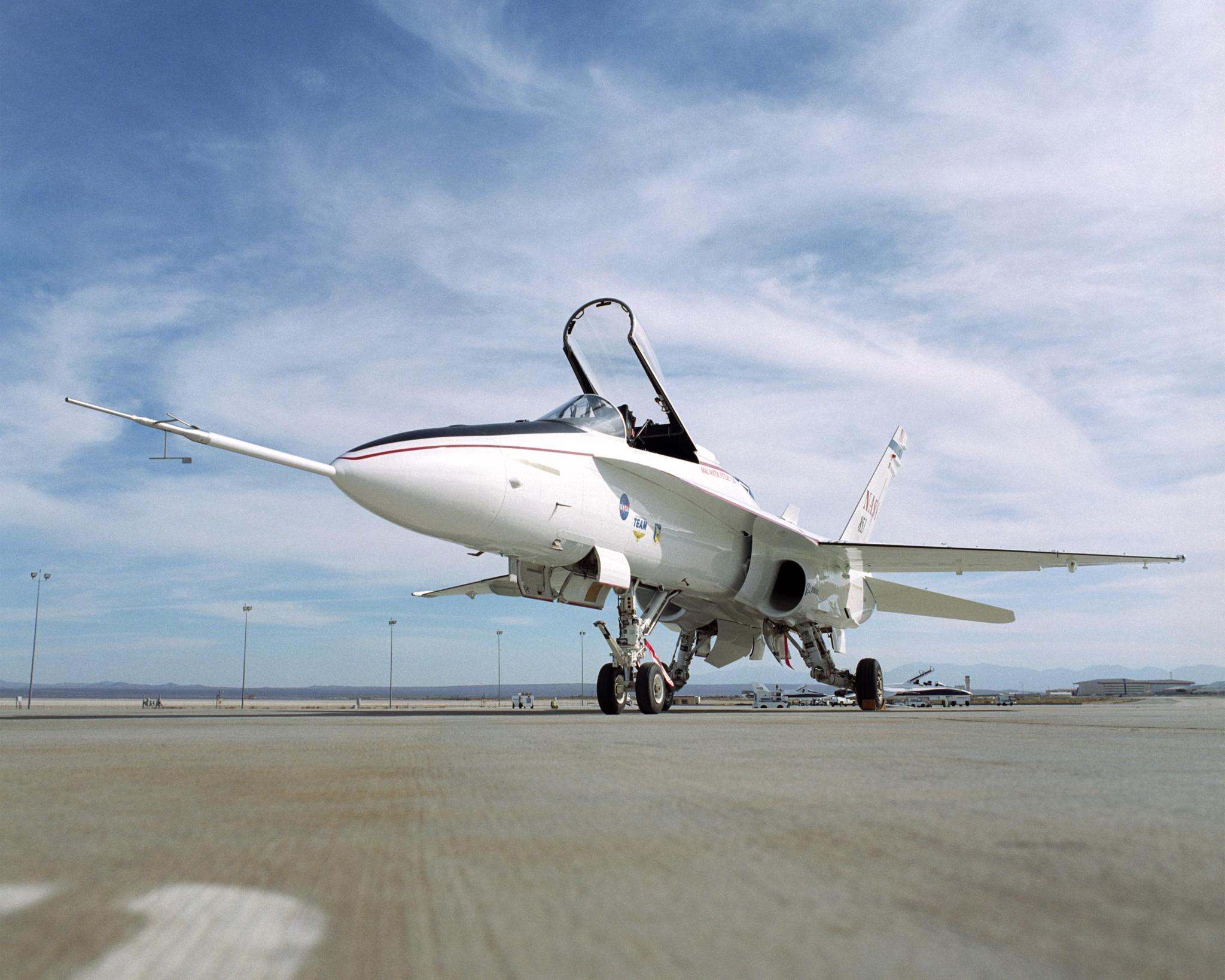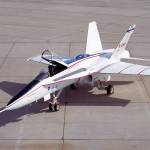F/A-18 Active Aeroelastic Wing

NASA’s Armstrong (formerly Dryden) Flight Research Center in Edwards, California, in cooperation with the U.S. Air Force Research Laboratory (AFRL) and Boeing Phantom Works, flew a high-tech adaptation of the Wright brothers rudimentary “wing-warping” approach to aircraft flight control: the Active Aeroelastic Wing (AAW). (It is formally registered with the USAF as the X-53). The focus of AAW research was on developing and validating the concept of aircraft roll control made possible by twisting a flexible wing in flight. The aircraft chosen for the AAW research was a modified U.S. Navy F/A-18A, which NASA acquired in 1999.
The ailerons and leading-edge flaps of the F/A-18s traditional aircraft control surfaces were used to twist a more-flexible-than-production F/A-18 wing to provide aircraft roll control.
Historical Background
When Orville Wright first took to the air on Dec. 17, 1903, he didn’t have ailerons with which to control the airplane. Instead, the brothers twisted or “warped” the wings for roll. They used a cradle with cables connecting it to the outer portion of both wings: the pilot lay in it and, shifting his torso left or right, warped the outer wing sections up or down to impart a roll.
Begun in 1996, the AAW flight research project was completed in the spring of 2005. After wing modifications in the late 1990s, the test aircraft was extensively instrumented and reassembly and ready for flight by early 2001. It was then subjected to extensive structural loads, wing stiffness, and vibration tests in the center’s Flight Loads Laboratory, and new control software was loaded onto the aircraft’s flight control computer.
Initial flights measured the forces available to twist the wing and control the aircraft, followed by a year of data analysis and control software redesign to optimize the performance of the flexible wing. The final phase was evaluating the AAW control laws and the handling and performance qualities possible with a flexible wing concept.
Goals and Results
The AAW project’s goal was to demonstrate improved aircraft roll control through aerodynamically induced wing twist on a full-scale high-performance aircraft at transonic and supersonic speeds. Over the course of the second phase of flight tests, the aircraft demonstrated roll rates adequate for lateral control (within 15% to 20% of a production F/A-18) without the use of the differential rolling horizontal tail used by standard F/A-18s.
Aircraft Modifications
The X-53 used wings from NASA’s retired F/A-18 TN 840 High-Alpha Research Vehicle (HARV). Several of the existing wing skin panels along the wing box section of the wing just ahead of the trailing-edge flaps and ailerons were replaced with thinner, more flexible skin panels and structure, similar to the prototype F/A-18 wings.
In addition, the leading-edge flap was divided into separate inboard and outboard segments and additional actuators added to operate the outboard leading-edge flaps separately from the inboard leading-edge surfaces.
In addition to the wing modifications, the Boeing Company’s Phantom Works division in St. Louis, Missouri, performed the AAW wing modifications, installed portions of the wing instrumentation and assisted in software development. Lockheed Martin and BAE Systems developed the AAW research flight control computer, while Moog developed the actuators for the outboard leading-edge flaps.
Funding
The AAW project received its funding from NASA’s Aeronautics Research Mission Directorate, as well as from the U.S. Air Force Research Laboratory. The total budget for the entire AAW project was approximately $45 million, including about $29 million in direct monetary outlay and about $16 million for in-kind support, spread over eight years.
Technology Commercialization
With the successful demonstration of actively controlled “wing warping” techniques for aircraft roll control at transonic speeds in the Active Aeroelastic Wing project, engineers will now have more freedom in designing more efficient, thinner, higher aspect-ratio wings for future high-performance aircraft while reducing the structural weight of the wings by 10% to 20%. This will allow increased fuel efficiency or payload capability, along with potentially reduced radar signature. The technology also has application to a variety of other future aircraft, such as high-altitude, long-endurance unmanned aircraft, transports, and airliners.
































